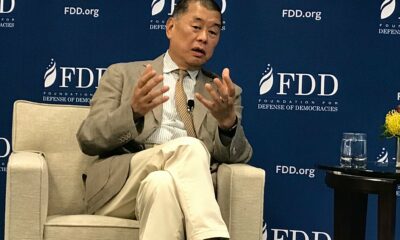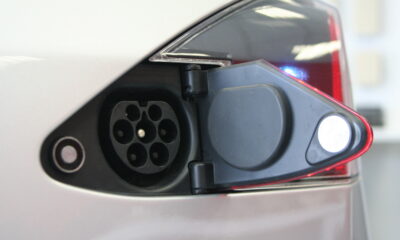Human Interest
UAW reaches tentative agreements with all Big Three
The United Auto Workers’ Union (UAW) has now reached tentative agreements with all Big Three automakers, effectively ending their strike.

The strike of the United Automobile Workers’ Union (UAW) might soon end, as the union reached tentative agreements all around. But questions remain on what the union actually gained for its membership, as the agreements promise barely more than half of what the union demanded. More questions remain about the future of electric vehicle manufacture, which is partly to blame for the strike.
UAW ending the strike?
First to reach a tentative agreement with the UAW was the Ford Motor Company. That agreement came on October 25, and has already gone to – and passed – the union’s executive committee. The 4½ year contract now goes to the 7,000 members who work at Ford.
Then on October 28, the UAW reached another tentative agreement with Stellantis, the conglomerate who now owns Chrysler. That left General Motors, and in fact the union intensified its strike activity against that firm, by having workers walk away from more plants.
But this morning, according to Breitbart, the union reached an agreement with GM.
Tentative agreements are always the first step toward ending any strike. Rarely does membership, or an executive committee, reject a tentative agreement. That, of course, is a testament to the tough, often acrimonious, negotiations with management. Most of the time, those negotiations never end, at least not forever.
Issues: pay, electric vehicle transition
The UAW struck all Big Three automakers in mid-September. This is the first time in the union’s history that it’s ever struck all Big Three at once. The union cited pay and pensions as their main issues. With regard to this, the union demanded 40 percent raises over four years; General Motors offered ten percent. Apparently the union got 25 percent over four and a half years – an even split of the difference.
But they also had concerns about the proposed electrification of the U.S. small-vehicle fleet. On the day of the strike, at least one member expressed that concern to President Joe Biden. Biden chose to continue the subsidies, direct and indirect, for EVs. Nevertheless, Ford loses $70,000 on every EV they sell, and have said so. Union members have expressed worries that the new electric cars require less labor – and many fewer parts – to build.
Tellingly, former President Donald J. Trump chose to address an audience of 500 UAW members and retirees, in lieu of the Second Republican Presidential Primary Debate. He expressed an even sharper concern: that electriv vehicles would likely be built in China, not America.
Electric vehicles not worth the hype
Over the weekend, the Texas Public Policy Foundation released a study accusing the government of hiding an EV’s true cost. TPPF charges that taxpayers, utility ratepayers, and buyers of conventional vehicles all subsidize electric vehicles to the tune of:
- $43,000 in Total Cost of Ownership, and
- $16.12 per gallon of the gasoline that would move a conventional vehicle over the same distance driven over ten years.
Despite such subsidies, electric vehicles cost more than most motorists can afford. Already these cars are piling up on dealership lots, and Ford is laying people off in its electric vehicle division. Ford’s CEO warned that electric vehicles “have become a political football.”
Yet Ford promised more investment in development of battery-powered electric vehicles – but also investment in hybrid vehicles. These vehicles have smaller batteries, useful for short hops and enduring traffic jams, reserving their engines for recharging the batteries and for long stretches.
Terry A. Hurlbut has been a student of politics, philosophy, and science for more than 35 years. He is a graduate of Yale College and has served as a physician-level laboratory administrator in a 250-bed community hospital. He also is a serious student of the Bible, is conversant in its two primary original languages, and has followed the creation-science movement closely since 1993.
-

 Executive15 hours ago
Executive15 hours agoFBI Raided Secret Service Agent’s Home in Tax Fraud Probe
-

 Civilization5 days ago
Civilization5 days agoEqual but Separate: How the Gender Divide Is Rewiring America
-

 Executive4 days ago
Executive4 days agoTrump Ditches ‘The Weave,’ Delivers Sales Pitch Susie Wiles Asked For
-

 Executive4 days ago
Executive4 days agoJudge Green-Lights Secret Service Agent’s Retaliation Case
-

 Executive3 days ago
Executive3 days agoWaste of the Day: Outlays Per Person Up Nearly 100X Since 1916
-

 Civilization5 days ago
Civilization5 days agoJimmy Lai’s Family Looks to Trump, World Leaders
-

 Christianity Today3 days ago
Christianity Today3 days agoYou Must Know His Voice – Powerful Video
-

 Guest Columns3 days ago
Guest Columns3 days agoBlood on the Sand: Australian Massacre Exposes Hollow Core of Anti-Zionism












